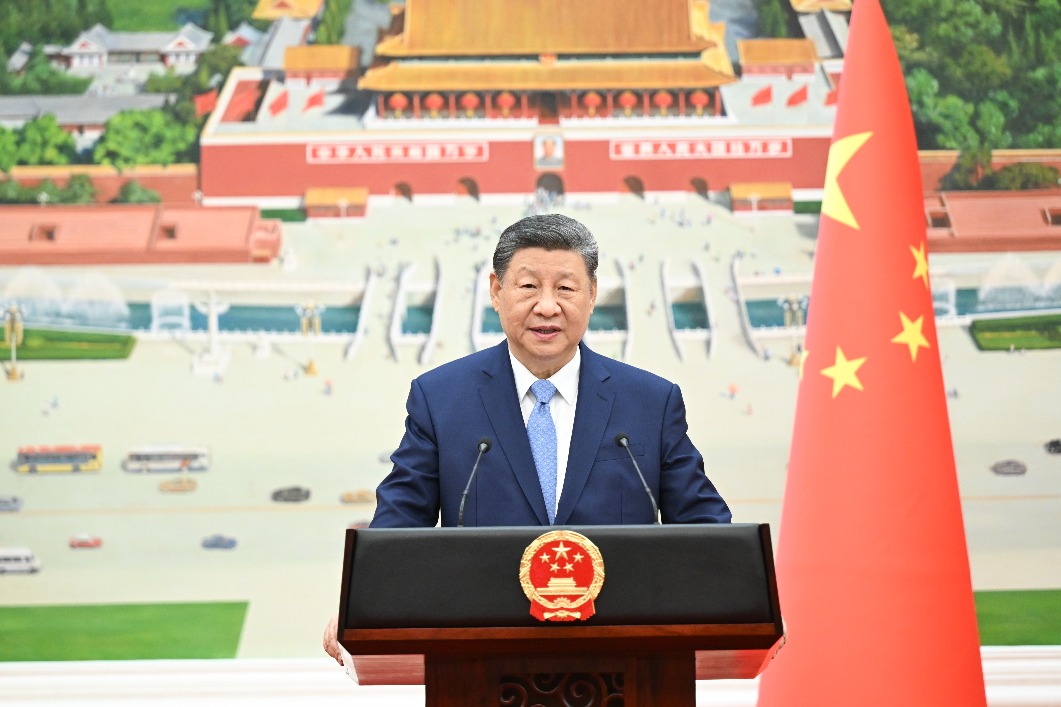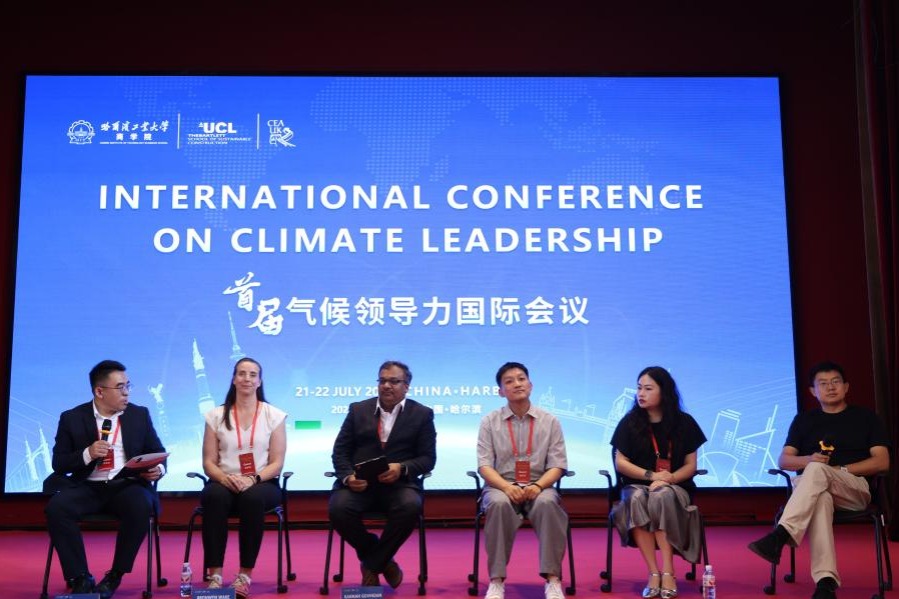City's green barrier boosts effort to cut carbon rates

TIANJIN-Last week, more than 300 rangers working at green ecological barriers in North China's Tianjin were busy pruning hundreds of thousands of saplings and reclaiming land for planting new trees.
"The survival rate of the saplings is high here. Only 3 percent of seedlings need to be replanted this spring so that we can reach 100 percent survival rate and complete the carbon sink target," says Fu Wenxuan, project manager in charge of the local green construction. A carbon sink is anything that absorbs more carbon from the atmosphere than it releases, for example, plants, the ocean and soil.
The first batch of 1,800 hectares of artificial reserve forests has completed the verification of carbon dioxide absorption and will soon enter the trading link. Carbon trading is the process of buying and selling permits and credits that allow the permit holder to emit carbon dioxide. According to official data, in 20 years, this part of the reserve forest alone can process about 250,000 metric tons of carbon, bringing at least 5 million yuan ($789,000) in revenue.
As the world's largest developing country yet to finalize industrialization, China has announced that it would strive to peak carbon dioxide emissions before 2030 and achieve carbon neutrality before 2060.
In 2018, Tianjin started to build a green ecological barrier of 736 square kilometers.
"The inside of the green ecological barrier is not only trees but an ecosystem covered with rice fields, lakes, grassland, and forested areas. It aims to combine afforestation and ecological restoration with high-standard farmland and tourism," says Bian Weiguang, director of the green ecological barrier construction headquarters office.
In addition to the visible environmental improvement, the most significant contribution of the green barrier is its use as a carbon sink.
"After restoration and green construction, the forest area in the first-level control area of the green ecological barrier has reached about 12,487 hectares, which can achieve carbon processing of about 126,000 tons per year. It is estimated that by 2035, the carbon sink of the barrier will reach about 206,000 tons per year," says Zhao Yichen, head of the planning department of the Tianjin low-carbon development research center.
"Afforestation is the best way to increase capacity of the carbon sink," says Niu Guimin, a researcher at the resources institute for the environment and ecology, Tianjin Academy of Social Sciences. "Compared with mature forests and over-matured forests with decreasing growth rates and balanced carbon absorption and emission, the hand-planted saplings vigorously grow with the highest carbon sequestration rate."
According to the data released by National Forestry and Grassland Administration, the total carbon storage of forest vegetation in China reached over 9 billion tons. The planted forest contributed nearly 20 percent of this. The continuous growth of the forest brings ecological value and economic value. Forestry carbon sink trading, as one of the products of carbon trading, is a significant way for carbon to generate money.
Li Tian, general manager of the Tianjin Climate Exchange, says forestry carbon sink trading in Tianjin is still in its infancy, but with the accelerated construction of the green barriers, forestry carbon sink trading will be promoted by the standardized management of forest land.
It is estimated that the annual transaction value of the forestry carbon sinks in the ecological barrier area will reach tens of millions of yuan by 2035, Li adds.
"As a coastal municipality not rich in forest resources, Tianjin's large-scale tree planting and carbon sequestration are amazing. The broad prospects of forestry carbon sink trading in China are worth the expectations," says Li.
Forestry carbon sink trading has been widely adopted across the country. As an early pilot, East China's Fujian province has completed a total of 3.5 million tons of forestry carbon sink transactions worth about 51.69 million yuan since 2017. Additionally, since last year, many cities, and provinces including Anhui and Gansu, have completed their first forestry carbon sink trades.
In addition to forestry carbon sinks, many other kinds of forest and grass economies like wood resources and forestry tourism will enjoy a bright future.
"Against the declining trend of the global forest resources, China's forest coverage rate and forest stock volume have increased for 30 consecutive years. It is China's contribution to the world. It shows people the bright prospects of the green industry," says Zhu Zhonghai, the assistant secretary-general of the China Forestry and Environment Promotion Association.
Xinhua
Today's Top News
- China calls for calm over border clash
- Xi: Nation to expand opening-up
- Talks urged to resolve China-EU trade issues
- China sees over 33.7 billion inter-regional trips in H1
- BRICS justifiably calls for IMF reforms
- Xi receives credentials of new ambassadors to China






























